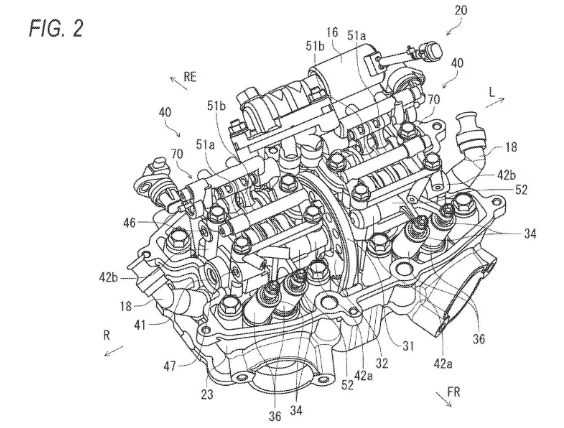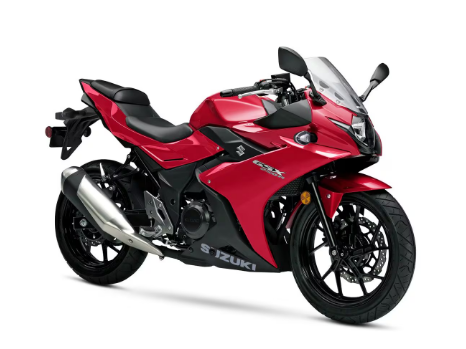Variable valve regulation and lift systems had a slow start in motorcycles, but their numbers have grown exponentially in the last two years as brands like BMW and, more recently, KTM embrace the technology – showing that, despite rumors of the demise of the internal combustion engine, it continues to be improved year after year. Now, Suzuki seems ready to join the fight with a new low-displacement VVT bicilidnric engine, after the publication of patent applications that show its design.
Suzuki already has experience with variable valve regulation in motorcycles. The company’s latest design of the GSX-R1000, introduced in 2017, uses an unusual fully mechanical cam phasing system that relies on centrifugal force to change valve timing as engine speeds increase. It is a design that the company created to circumvent MotoGP rules that specifically prohibit electronic and hydraulic VVT, and having proven its worth on the track, it was adapted for the sport version for road use. We have also seen patents suggesting that Suzuki is working on a more conventional hydraulic cam phasing system for future versions of the Hayabusa, using the same type of technology that has already been adopted by companies like Ducati.

But these cam phasing VVT systems only change the valve timing, shifting it a few degrees forward or backward to increase performance or reduce emissions. More advanced VVT setups also change valve lift (the amount the valve opens) and duration (how long it stays open), switching between two completely different cam lobe profiles. We’ve seen this type of technology adopted in the upper end of the market with cam changing systems like BMW’s and what KTM has now added to the new 1390 Super Duke, which laterally slides the intake camshaft to change the lobe that acts on the intake valves. Further down the market, we’ve also seen variable timing and lift systems emerge, notably Yamaha’s VVA system, used in the latest MT-125 and YZF-R125. These lower-end systems, built for SOHC engines, use two-part oscillators to actuate the intake valves, and it is this design that Suzuki is now working on for a new low-displacement twin-cylinder engine.








